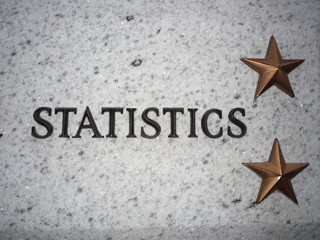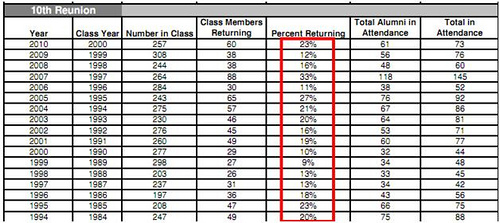 Would you throw a curve ball to a hitter famous for hitting fastballs?
Would you throw a curve ball to a hitter famous for hitting fastballs?
You would, wouldn’t you. You would have studied his stats and figured out that this guy hits far more fastballs into the center field bleachers than he does curve balls.
So your game plan would simply be to feed him a steady diet of curves. And why not, the probabilities are in your favor.
So what does this have to do with planning a class reunion?
You see, if you study class reunion statistics, then you will be able to plan a better class reunion. You’ll learn
- What months are best to plan a class reunion.
- The percentage of your classmates that will attend the reunion
- How to budget your expenses and income better
What Month Do Most Class Reunions Occur In?
Deciding what month to hold the class reunion can be difficult. According to reunionannouncements.com, certain months have a higher number of reunions held than others.
- July: 23%
- August: 21%
- June: 12%
- October: 12%
- November: 5%
- May: 4%
Summer, as expected, had the highest number of class reunions. The weather is nicer, its easier to travel and outdoor activities can be planned. Planning a reunion in the summer is also practical for classmates with families that can only vacation during this time.
Send out invites a year ahead of time so attendees can plan their next summer accordingly. Also, keep in mind that summers are more expensive in general when planning an event. You can expect higher rates at hotels (when you block rooms for classmates), higher catering and venue costs along with limited availability.
November, surprisingly had a few class reunions as well. Many planners host a reunion around thanksgiving knowing that many people come home for the holidays.
May is a month that is often overlooked as a good month for class reunions. Colleges are usually closed by the middle of May so many hotels are looking for additional business in the final two weeks. You can negotiate group hotel rates at some significant discounts.
Estimating Guests
Another statistic to keep in mind is that on average 80% to 90% of your former classmates will bring a guest. Their guests could include friends and family members. If you are expecting 100 classmates to attend, then it would be fair to assume that 180 people will be coming to the reunion. Keep this statistic in mind when you to plan the menu, and create the Class Reunion Budget.
Budget Assistance
When planning for food, entertainment, venue and party favors, plan according to how many you expect to attend (20-30% of your graduating class), then double that number since many will bring a friend or spouse along to serve as a buffer. Keep in mind that you will have extra costs for vendor meals, teachers, and honorary guests.
For more information, read “How To Create A Class Reunion Budget”
Finding Classmates
When trying to locate your former classmates an important statistic to keep in mind is that on average more than 60% will reside in their home state. This is helpful information when trying to contact people you cannot locate through Facebook or other Internet websites.
For some tips, read “How To Find Classmates For A Class Reunion”
When to Begin
The most successful high school reunion planning begins at least one year in advance. In an article on the “State of the Reunion”, Becky Ebenkamp writes that almost one third of the women looking to attend a class reunion “would start getting ready for this night of inspection a half-year prior; another 15% would need three to six months to whip themselves into shape.” Not giving your former classmates enough time to get ready can be detrimental to your class reunion attendance.
How Many Classmates Attend The Reunion?
On average about 20% to 30% of your graduating class will attend your class reunion. Attendance at reunions varies from class to class and one of the best ways to guesstimate how many will attend yours is to ask the alumni office for historical numbers.
Class reunion attendance depends on four factors.
- How strong the class reunion planning committee is in searching, and subsequently engaging potential attendees is.
- The milestone number is another factor. Whether it is the 15th reunion or the 50th reunion makes a big difference in attendance.
- The last factor and one that you cannot control is how strong a program your school has with their alumni. Some schools regularly have a 30-40% attendance at their class reunions while others are in the teens.
- Class size is yet another indicator of attendance. Typically, a small graduating class can see a 50% turnout at a school like Mount Royal University.
Generally speaking, the 50th reunions were extremely popular across the board followed by 10th and the 25th.
Using the graduating class of 1955 below as an example, the 50th class reunion saw attendance percentages in the mid 20’s versus the 30th reunion which could barely get to 10% attendance.

Read additional alumni statistics for Southwestern University.

In order to get a better understanding of the kind of attendance you can expect at your class reunion, ask the alumni office for historical numbers. Most schools track the percentage of attendees and will happily provide this number.
The data above will help you decide on when to plan, and how many to expect for your next class reunion. Knowing this information will help you plan smarter and increase the attendance at your next class reunion.
What should you read next?
Since you’re planning a class reunion, why not get some great tips to how to increase the attendance at your event..